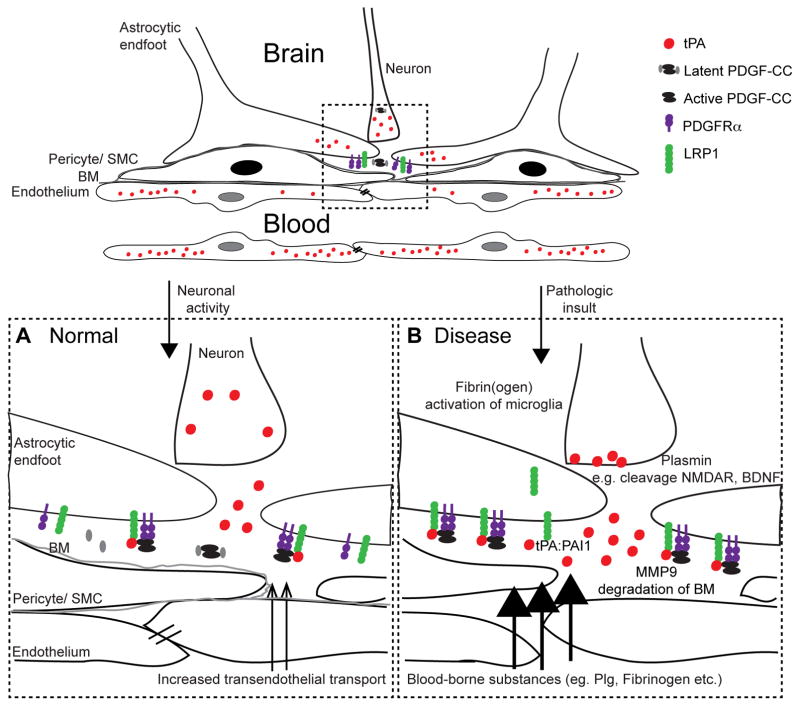Figure 3.
tPA-mediated regulation of BBB integrity. A) Under physiologic conditions tPA is released by activated neurons into the perivascular space where it activates PDGF-CC, and subsequently PDGFRα signaling on perivascular astrocytes, through interaction with LRP, which leads to cerebrovascular changes associated with neuronal activity. B) In pathologic conditions initial increase in BBB permeability is mediated by proteolytic active tPA, potentially in response to the increased energy and metabolic demand in neurons following insult. Excessive signaling via either active tPA or via tPA:PAI-1 complex formation and LDLR signaling, leads to further opening of the barrier and subsequent extravasation of blood-borne substances from the vascular space into the brain parenchyma. Following intravenous treatment with thrombolytic tPA it is plausible that exogenous tPA enters the brain through the breached BBB thereby exacerbating the PDGF-CC/PDGFRα signaling in the NVU.

